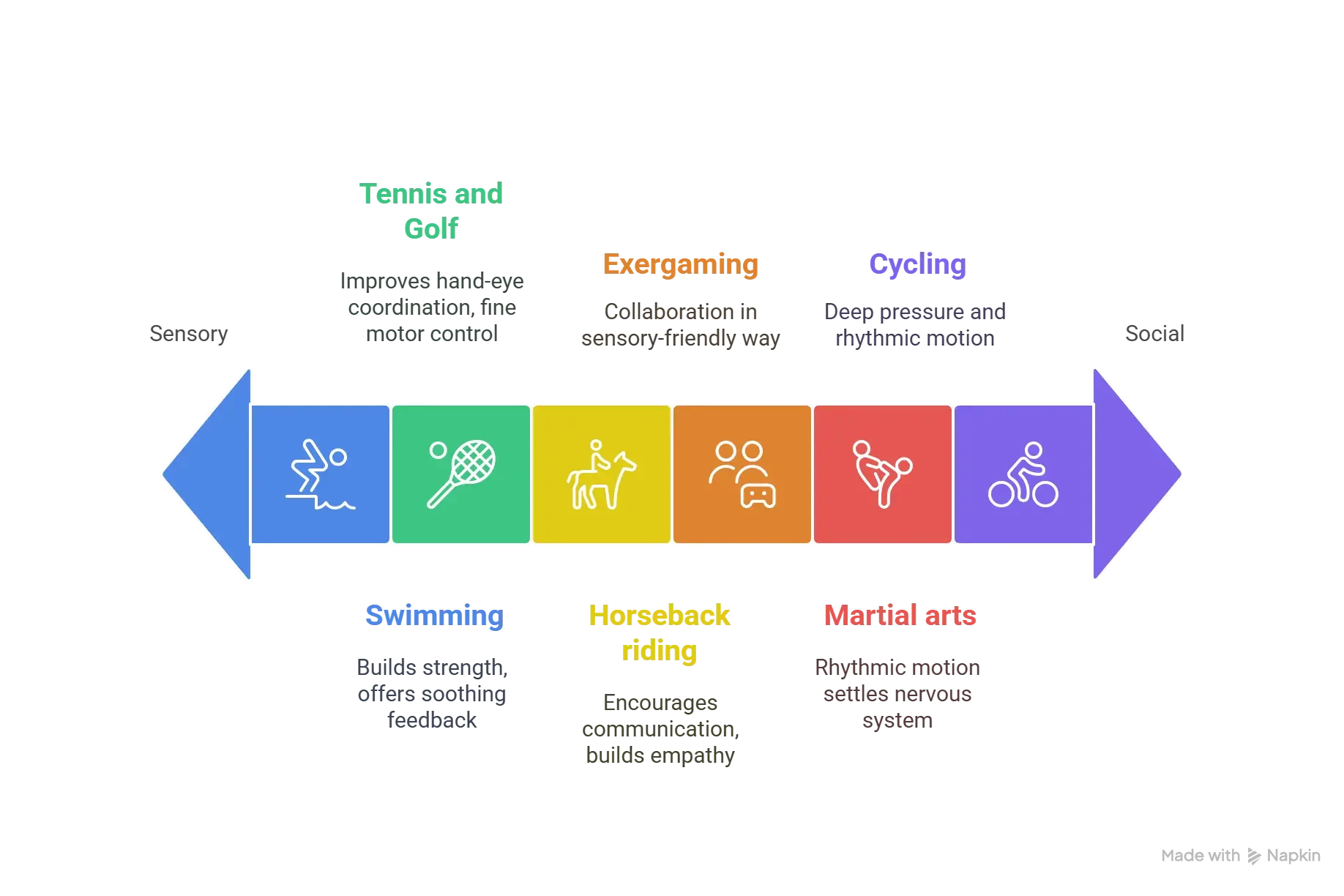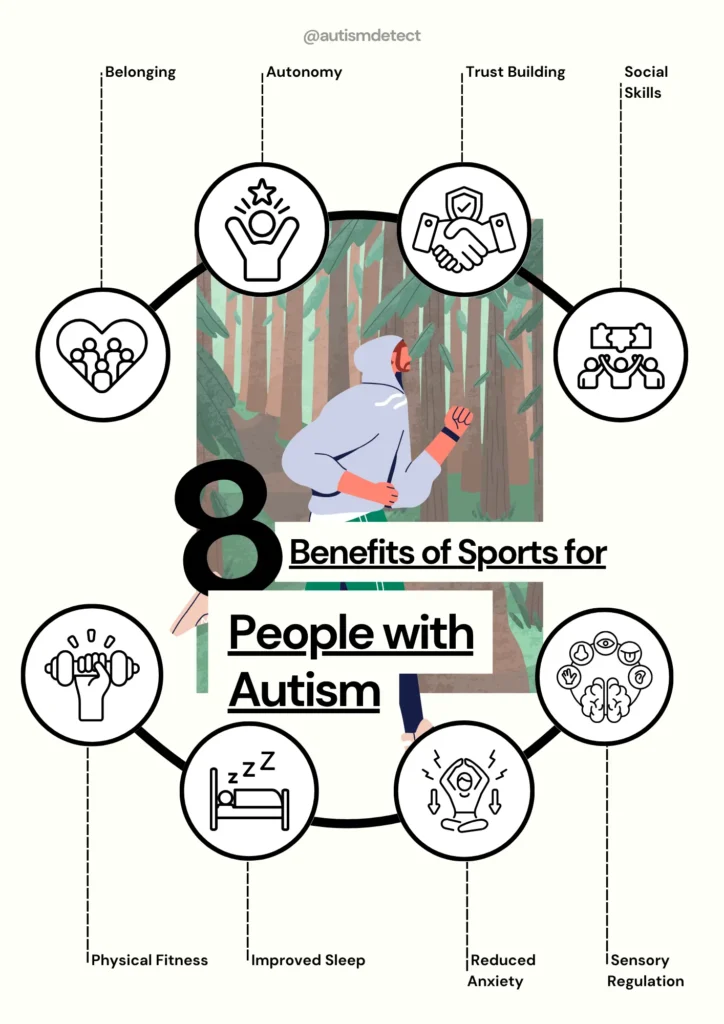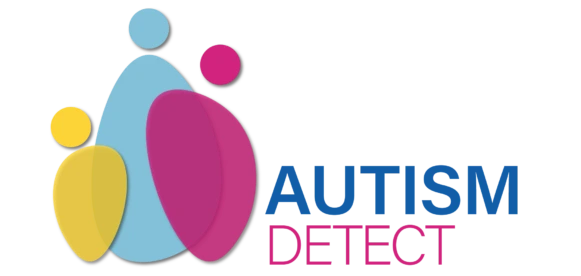Sports and autism. Two words that don’t always appear in the same sentence, but maybe they should. For many families and professionals living life on the spectrum, sports can feel like unfamiliar territory.
Is it helpful?
Overstimulating?
Inclusive enough?
Or just another battle in a week already full of them?
The truth is, sport doesn’t need to mean noisy locker rooms or chaotic team drills. It can mean calm laps in a swimming pool. Quiet focus on a yoga mat. The steady rhythm of a tennis ball against a wall.
For autistic children and adults alike, the right kind of sport isn’t just possible. It can be transformational.
This guide discusses the facts, clears up the myths, and offers a grounded look at how sports can support physical, social, and emotional wellbeing when done thoughtfully. It’s not about turning autistic kids into athletes. It’s about helping them feel safe in their own bodies, connected in their own ways, and confident in movement on their terms.

Why Sports Matter for Autistic Individuals
Sport, when dealt with care, goes far beyond physical fitness. Research increasingly shows its value as a multi-layered developmental tool for autistic people.
At the most basic level, regular physical activity supports coordination, cardiovascular health, and strength. But for autistic children especially, the benefits often reach deeper:
- Better sleep patterns
- Reduced anxiety
- Improved sensory regulation
Movement activates systems in the brain tied to focus, emotional control, and even language.
More than that, sport can offer a quiet space for big learning. Not academic learning, but learning how to wait a turn, read body language, or manage a surprise. These lessons don’t always land in the classroom, but they can emerge during a riding session or martial arts class.
Slowly, and with repetition.
The key is removing the pressure and pace that often make sport inaccessible. When designed to respect sensory needs, communication styles, and individual rhythms, sport becomes something else entirely. It becomes a tool for trust-building, autonomy, and belonging.

What Are the Benefits of Sports for People with Autism?
Sport offers far more than exercise for autistic individuals. It can strengthen the body, support social growth, and bring calm to overwhelmed minds, all through carefully chosen, consistent movement.
Motor Skills and Physical Confidence
Many autistic children struggle with coordination or muscle tone, which can make everyday movement more effortful. Sports offer a structured way to build physical skills without pressure.
Repetition improves balance, posture, and body awareness. Confidence often follows.
Swimming, for example, builds strength while offering soothing sensory feedback. Tennis and golf support hand-eye coordination and fine motor control. These sports are also predictable and low-contact, which helps reduce anxiety around unexpected movements.
Building Social Bridges
Group activities can create safe spaces for learning how to interact. In sport, social cues often happen side by side rather than face to face, which can feel more manageable.
Horseback riding encourages communication between child and animal, which builds empathy and patience. Exergaming, or interactive fitness games, lets players collaborate or compete in a sensory-friendly way.
These options support shared attention, turn-taking, and following rules without the overload that comes with traditional team sports.
Calming the Mind and Body
For many autistic people, movement is more than physical. It can help with emotional regulation and reduce challenging behaviours. This is largely due to proprioceptive input, which helps the brain understand where the body is in space.
Martial arts, cycling, and even climbing walls offer deep pressure and rhythmic motion that help settle the nervous system. These activities have been linked to better sleep, lower anxiety, and fewer meltdowns. The key is consistency and choice, letting the individual set the pace and preferences.
What Challenges Do Autistic Individuals Face in Sports?
While sports can be rewarding, they are not always accessible without support. Many autistic individuals face barriers that make traditional athletic settings difficult. These challenges are often tied to sensory processing, motor coordination, and social pressure.
Understanding these hurdles is the first step to creating more inclusive, autism-friendly sports environments.
Sensory Sensitivities
For some autistic people, sports settings can feel overwhelming. Bright lights, loud whistles, echoing gymnasiums, and crowded sidelines may all contribute to sensory overload. Many parents (of autistic children), and caregivers report that unpredictable environments and high-volume noise can trigger distress or meltdowns. Even well-meaning cheers from a crowd can be challenging when the brain is already working hard to process and filter input.
Motor Planning and Muscle Tone Issues
Many autistic children experience dyspraxia, which affects coordination and timing. Team sports often rely on fast decision-making and fluid body movements, making them hard to manage. Poor muscle tone can add fatigue or frustration.
Individual activities like archery, swimming, or martial arts allow participants to move at their own pace and focus on personal progress.
Communication Overload and Social Anxiety
Fast instructions, constant feedback, and group dynamics can lead to communication burnout. Autistic individuals may struggle to process verbal cues in real time, especially in high-energy environments like basketball or football. This mismatch can result in withdrawal, frustration, or quitting altogether.
Programs that prioritise clear, slow instruction and smaller group sizes see better long-term engagement.
What Adaptations Make Sports More Accessible for Autistic People?
Autistic individuals often thrive in environments that match their sensory, motor, and communication needs. By making thoughtful adaptations, sport can become a safe, enjoyable part of life rather than a source of stress.
The key is to shape the space, coaching, and activity around the person, not the other way around.
Sensory-Friendly Spaces
Reducing sensory overload is a powerful first step. Simple changes such as using noise-dampening balls, switching off fluorescent lights, or adjusting background noise can make a dramatic difference. Some programs also offer designated “cool-down” zones where children can reset when overstimulated.
These small shifts help prevent meltdowns and support longer participation.
Supportive Coaching
Coaches who understand autism can have a lasting impact. Techniques rooted in Applied Behaviour Analysis (ABA), like task analysis and visual schedules, offer structure and clarity. Video modelling can show what to expect before a session begins. When paired with consistent, one-on-one feedback and positive reinforcement, this approach can double engagement and retention.
Choosing the Right Sport
Not every activity suits every child. Parents and coaches should focus on sports that are low in verbal demand, predictable in routine, and rich in proprioceptive input. Swimming and martial arts are frequently recommended by therapists and families due to their structure, sensory benefits, and individual focus.
Matching the sport to the individual’s sensory profile and interests builds confidence and long-term motivation.
Listening to the Community
Understanding what works best for autistic individuals starts with listening to their lived experiences, autonomy, flexibility, and gradual exposure consistently emerge as keys to meaningful and lasting participation in sports.
What Autistic People & Parents Say
Autistic individuals and their families often highlight the importance of autonomy in sports. Insights from Autism communities on Reddit and Facebook show that when children can self-select their activities, they are more likely to engage and enjoy the experience.
Allowing personal choice and respecting preferences increases long-term participation and motivation, creating an environment where the individual feels in control.
Gradual Exposure & Flexibility
A one-size-fits-all approach doesn’t work for autism. Gradual exposure to sports often for over 6 to 8 weeks helps ease the transition, reducing anxiety while building confidence. Instead of emphasising competition or perfection, focusing on trying, enjoying, and experiencing helps autistic children feel successful, even if they aren’t excelling in traditional ways.
Conclusion
Sports do not need to be loud, fast, or competitive to be meaningful. For autistic individuals, the true value of sport lies in how well it meets their unique needs, supporting sensory regulation, encouraging social growth, and building confidence in movement.
With the right adaptations, inclusive coaching, and above all, patience, sport becomes a platform for trust and self-expression. When families and communities listen to autistic voices, prioritise gradual exposure, and respect individual preferences, participation increases, not just in numbers, but in quality and enjoyment.
In the end, it is not about scoring goals or earning medals. It is about helping autistic people find comfort in their bodies, joy in movement, and a sense of belonging through activities that honour who they are. Every step, swim, or stretch is a win when sport becomes a space for growth, regulation, and connection.
Frequently Asked Questions
-
What famous athlete has Autism?
Anthony Ianni is a well-known example. Diagnosed with autism as a young child, he went on to play college basketball at Michigan State University. He became the first known autistic Division I basketball player and has since become an advocate for autism awareness, showing that inclusion in sport is not only possible but powerful.
-
Which martial art is best for autistic individuals?
Martial arts that emphasise structure, repetition, and body awareness tend to be a good fit. Many families report positive experiences with disciplines like karate, judo, capoeira, and jiu-jitsu. These activities provide predictable routines and clear physical boundaries. That said, martial arts may not be suitable for children who struggle with aggression or impulse control, so it’s important to match the activity to the individual’s needs.
-
What is an autistic passport?
An autistic passport is a personal document that helps communicate a person’s sensory preferences, communication style, and support needs, especially in health and public service settings. While not directly linked to sport, it can be helpful when enrolling in new activities or working with unfamiliar coaches, as it provides quick, essential context for inclusive practice.
-
Do any Olympic athletes have autism?
Yes. For example, Chris Morgan, a decorated Australian rower, has spoken openly about being autistic. He attributes his attention to visual detail and focus as strengths in competition. Stories like his are a reminder that neurodivergence and elite performance can absolutely coexist.
-
How long should a sports program run before results show?
At least 12 weeks, 3 sessions per week, with 60-minute durations yields the most consistent outcomes.










